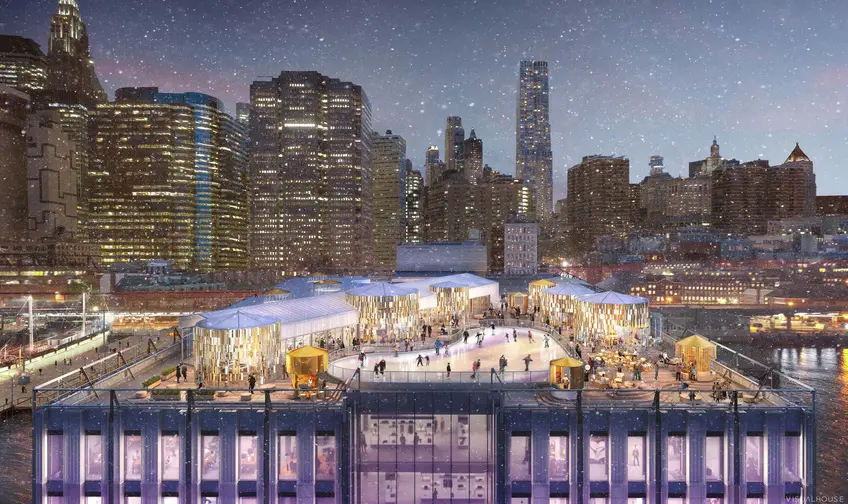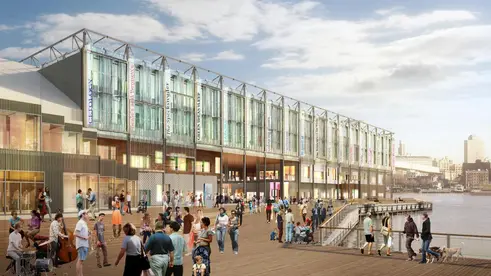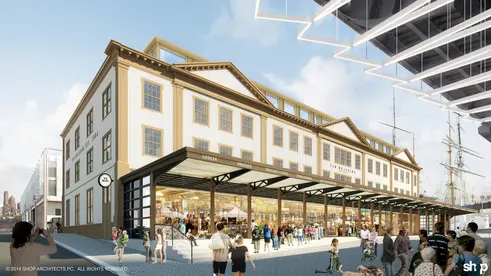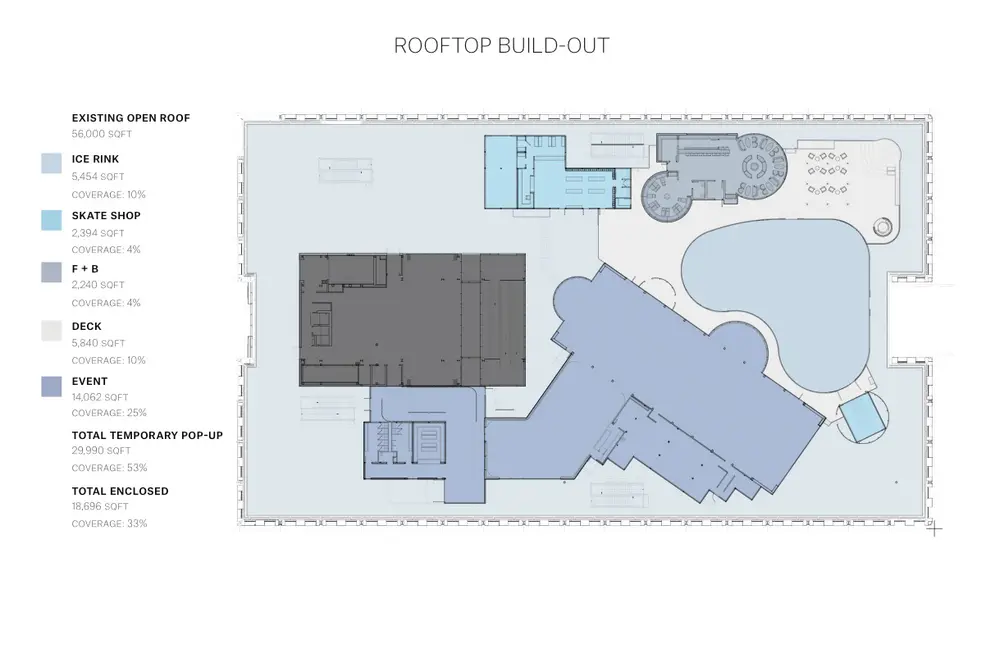 Yes, the holiday season is almost here and NYC developers are finalizing ways to separate you from your money. Rendering of Pier 17's rooftop
Yes, the holiday season is almost here and NYC developers are finalizing ways to separate you from your money. Rendering of Pier 17's rooftop
Despite its abundance and the vital role its played throughout the city's history, the New York's waterfront lacks the vibrancy and comprehensive thinking that has made the Chicago, Barcelona, and Vancouver waterfronts their city's premier attraction for recreation and entertainment. While work is undoubtedly moving in the right direction, as fallow stretches become cleaned and redeveloped with new public and private goodies, many past agreements, hashed in conjunction with the real estate community, leave the impression that the passive lawns and esplanades are the ornamental backyards of the luxury developments beside them. Newer and grander waterfront parks such as Brooklyn Bridge Park, Hunters Point South Park, and Domino Park introduce a wider range of activities with a sprinkling of dining/drinking options -- showing that our waterfront can be just as inviting and energized as other cities around the globe.
Manhattan, despite its island-ness, has had a more difficult time in creating vital waterfront areas. Sure, Hudson River Park and Riverside Park are decent places for laying on the grass or sitting on a bench, but both are hampered by the obstacle (and constant hum) of the West Side Highway that snakes just a few dozen feet from their shorelines. The East Side is even worse with the FDR Drive leaving just a sliver of space for recreational use. However, its elevated southernmost section that sides the Financial District has provided the most opportunity and was recently mollified by SHoP Architects who programmed several eating/drinking venues, a dog run, and other uses underneath the highway's bleak undersides. Here is also where the Howard Hughes Corporation (HHC) is endeavoring a revitalized South Street Seaport district whose Post-Sandy success is dependent on overcoming the psychological barrier the FDR imposes.
 Rendering of the new Pier 17
Rendering of the new Pier 17
 Chef Jean-Georges Vongerichten will open a 40,000 square-foot, seafood-themed marketplace inside the Tin Building next to Pier 17
Chef Jean-Georges Vongerichten will open a 40,000 square-foot, seafood-themed marketplace inside the Tin Building next to Pier 17
To draw visitors to the shore, a new Pier 17 complex (also designed by SHoP), is nearing completion. Replacing a romantic nautically-themed building filled with tourist trappings, the new pier complex is largely covered in glass and evokes a shipping container. Though lacking the nostalgic, cheesy ambiance of its predecessor, the project seeks to mimic the quintessential New York streetscape of boutiques, restaurants, and retail spaces, all organized around open-air pedestrian thoroughfares designed by James Corner Field Operations.
Judging from a recent visit, the unfinished project has already brought an authentic buzz to the area attracting both locals and tourists alike. With its impressive exterior lighting by L'Observatoire International and a 1.5-acre rooftop that has attracted several concerts and events, Pier 17 is already a destination. The retail has yet to open, but will bring culinary offerings from restauranteurs such as Jean-Georges Vongerichten, David Chang, and Andrew Carmellini. There will also be a 19,000-square-foot studio for ESPN.
 Roof top plan of the temporay village (Rockwell Group via LPC)
Roof top plan of the temporay village (Rockwell Group via LPC)
Making the Seaport District a year-round attraction is one of HHC’s paramount goals in their $731 million redevelopment plan. Historically, wintertime has posed a challenge in bringing visitors and shoppers to the waterfront. Tomorrow, the team will before the Landmarks Preservation Commission to build a temporary winter village for this coming holiday season. Brookfield Place, on the other side of the island, has been ramping up their holiday season festivities in recent years, and Bryant Park is beginning to feel more spirited than Rockefeller Center itself.
According to the presentation document on file with the agency, the winter-themed rooftop is being designed by David Rockwell's Rockwell Group. Plans show the there will be an ice rink, skate shop, warming hut, in addition to a restaurant and shops. The rink will be slightly smaller than the one at Rockefeller Center and measure 5,455 square feet in area (73' x 73'). The hearing is scheduled to take place Tuesday, September 18 at 1:30 P.M. The full presentation can be viewed here.

 6sqft delivers the latest on real estate, architecture, and design, straight from New York City.
6sqft delivers the latest on real estate, architecture, and design, straight from New York City.
